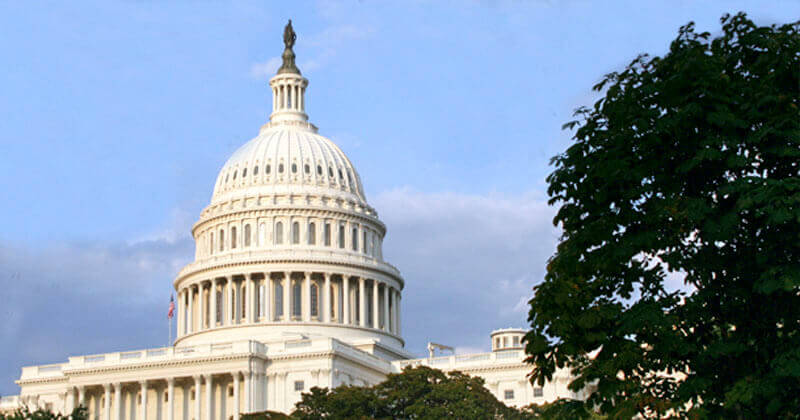The global health research community has a reason to celebrate this weekend. Yesterday, Senator Patty Murray (D-WA) introduced in the US Senate a significant
piece of global health legislation that would strengthen global health research programming within the US Agency for International Development (USAID)
and improve coordination of global health research and development (R&D) across the US government.
The legislation—known as the 21st Century Global Health Technology Act—is companion legislation to the House version of the bill, HR 1515,
which was introduced by Representatives Albio Sires (D-NJ) and Mario Diaz-Balart (R-FL) in April 2013 and is now awaiting consideration in the House
Foreign Affairs Committee. The House and now Senate introduction of the bill shows a growing recognition among US policymakers of the critical role
investments in research and innovation play in improving public health worldwide.
 The 21st Century Global Health Technology Act would strengthen global health research programming within the USAID and improve coordination of global health R&D across the US government.
The 21st Century Global Health Technology Act would strengthen global health research programming within the USAID and improve coordination of global health R&D across the US government.
Senator Murray and the House authors set out to create legislation that would (1) encourage the development of health products that are affordable, culturally
appropriate, and easy to use in low-resource health systems, and (2) would—importantly in these fiscally-constrained times—cost taxpayers
nothing. Thus, this legislation doesn’t mandate new funding. Instead it focuses on improving efficiency, coordination and cooperation across agencies
and existing programs.
The bill focuses on three main areas. The legislation:
- Establishes USAID’s mandate to conduct global health R&D and calls on the agency to create an overarching strategy which would help fill current
gaps.
- Asks USAID to coordinate and collaborate with other agencies to create a cross-government strategy for global health research.
- Codifies into law USAID’s Health Tech program—which focuses on developing medicines and health products for use in low-resource settings.
Let’s break down the significance of each of the bill’s three main impact areas:
Strengthening USAID global health R&D mandate
While recognizing the historic work of USAID in developing new products for use in the developing world, the bill gives an official mandate for USAID to
conduct R&D across its portfolio by telling the agency that it should include research as part of each type of global health work it undertakes.
This ensures health R&D remains a central focus of USAID’s work and makes sure current gaps across the agency’s portfolio are filled.
Coordinating/collaborating with other agencies
The US government is currently involved in 200 of the 365 global health products in the R&D pipeline, with work spread across many agencies including
USAID, the National Institutes of Health, the Centers for Disease Control and Prevention, the Department of Defense and the Food and Drug Administration.
That means there are a lot of cooks in the global health R&D kitchen. This bill calls on USAID to coordinate and collaborate with the other US
agencies involved in global health to develop a “whole-of-government” approach to global health research and improve outcomes, leveraging US funding
and ensuring US tax dollars are well spent. While the bill doesn’t mandate how that coordination should occur, it does require USAID to report to Congress
progress made on this objective.
Codifying US Health Tech program
The Health Tech program has existed at USAID for over 25 years. It forges collaborations between the public and private sector—known as public-private
partnerships—to develop health technology solutions for people in the developing world. It has produced many innovative products, such as the
vaccine vial monitor—which changes color to indicate whether a vaccine has been stored at a proper temperature and remains effective. So if the
program already exists and works, than why does “codifying” it matter? This legislation would make the Health Tech program an official part of US law.
That’s important because in a difficult fiscal climate in which cuts are occurring, the program’s inclusion in US law helps protect it from elimination
and assure it can continue to carry out its work.
So what’s next for the bill? As we all know from the singing Bill on Capitol Hill, Senator Murray’s
introduction of this legislation in the Senate represents one of the first steps in the long process it must go through to become US law. The bill
will now be referred to the Senate Committee on Foreign Relations for further consideration.
While the path ahead for the legislation is still uncertain, it’s worth pausing to celebrate this initial victory. The fact that this legislation has been
championed by Senator Murray and such significant advocates in the House indicates recognition by US policymakers that global health R&D is both
critical to US health and foreign policy goals and a smart economic investment. After all, sixty-four cents of every US dollar invested in global health
research goes directly to US-based researchers.
So this weekend when you are out with friends and family, raise a glass to Senator Murray for being a steadfast advocate and tirelessly working to advance
US leadership in global health R&D.

